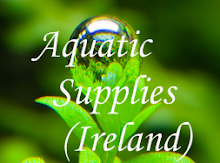Japanese Moss Ball
(Chladophora aegagropila)
| Scientific Name | Chladophora aegagropila | | Common Name | Moss Ball | | Category | Mass | | Temp | 15-28 | | pH | 6-8 | | Lighting | low-medium | | Growth | V.Slow | | difficulty | V. Easy | | Origin | Japan | | Position in Tank | Anywhere | |

Moss balls are undemanding, beautiful aquarium plants. Their eye catching spherical shape makes them an interesting addition to an aquarium or biorb.
FACT:
Moss balls can grow to a maximum size of 12 inches in diameter!
They are not only beautiful, but also help to reduce algae growing in the aquarium. Algae requires nutrients to grow, particularly phosphates and nitrates. Moss balls use these nutrients in the aquarium thus starving nusciance algae and reducing its growth.
Shrimps love to browse on the microorganisms found living on these plants.
Moss balls do not need any specialist care. They prefer moderate to bright light levels. Simply place your moss ball in the aquarium - do not push it into the gravel.
Moss balls are native to Japanese lakes and are so sought after that they have become a protected species. They have subsequently become a national treasure of Japan.
This has to be one of the easiest, low maintenance, useful and beautiful aquarium plants
|
Ambulia Sessiliflora
| Name | Ambulia sessiliflora | | Category | Stem | | Temp | 15-28 | | pH | 6-8 | | Lighting | low-medium 2 | | Growth | Fast | | difficulty | Easy | | Origin | Southeast Asia | | Position in Tank | Background |

|
| Anubias Barteri.
(Var:nana)
Scientific Name | Anubias Barteri | | Common Name | Var:nana | | Category | Rhizone | | Temp | 20-28 | | pH | 6-8 | | Lighting | V.low-medium | | Growth | V.Slow | | difficulty | V. Easy | | Origin | ------- | | Position in Tank | Attached to décor | |

Comments
Anubias barteri var. nana is a small, attractive plant which thrives in all conditions. It grows slowly, and the leaves survive for several years, giving slow-growing algae the chance to become established. The best result is achieved by planting on a stone or tree root. Fishing line can be used to attach the plant until it gains a hold. If planted on the bottom the rhizome must not be covered because it tends to rot. It flowers frequently under water. It is not eaten by herbivorous fish.

|
Echinodorus
('Ozelot')
Scientific Name | Echinodorus 'Ozelot' | | Common Name | ”Ozolot” | | Category | Root | | Hight | 20-40cm | | Width | 25-30cm | | Temp | 20-28 | | pH | 6-8 | | Lighting | V.low-medium | | Growth | Fast | | difficulty | V. Easy | | Origin | Africa | | Position in Tank | Middle/Rear | |
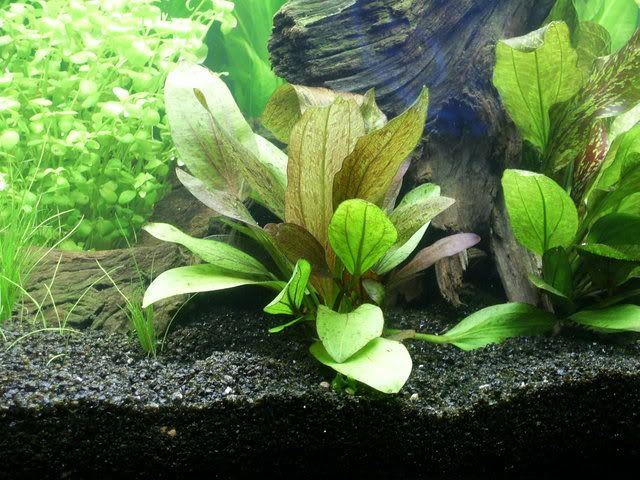
Comments
Echinodorus 'Ozelot' is a decorative hybrid between Echinodorus schluteri 'Leopard' and Echinodorus x barthii. Naturally, it is the elliptical black spots on the red-brown leaves that have given this plant the name 'Ozelot'. The spots are darkest on the youngest leaves, and unlike many other spotted Echinodorus Echinodorus 'Ozelot' retains its spots even at low light intensity. It is an undemanding, good plant for beginners.
|
Anubias barteri
(''coffeefolia'')
Scientific Name | Anubias barteri ''coffeefolia'' | | Common Name | ''coffeefolia'' | | Category | Rhizone | | Hight | 20-40cm | | Width | 25-30cm | | Temp | 20-28 | | pH | 6-8 | | Lighting | V.low-medium | | Growth | Slow | | difficulty | V. Easy | | Origin | Africa | | Position in Tank | Middle/Rear | |

Comments
Anubias barteri ''coffeefolia'' is a beautiful, low variety of Anubias barteri. The new leaves are red-brown. The color combination and leaf shape make it an attractive variety in both large and small aquariums. It flowers frequently under water. It is not eaten by herbivorous fish.
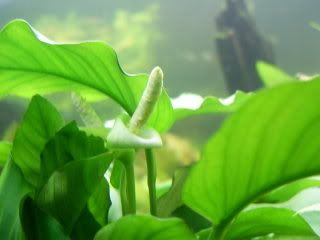
|
Vesicularia Dubyana
(Java Moss)
| Scientific Name | Vesicularia Dubyana | | Common Name | Java Moss | | Category | Moss | | Hight | Spreads | | Width | Spreads | | Temp | 15-28 | | pH | Grows in most waters | | Lighting | low-medium | | Growth | V.Slow | | difficulty | V. Easy | | Origin | S.E. Aisia | | Position in Tank | Anywhere | |
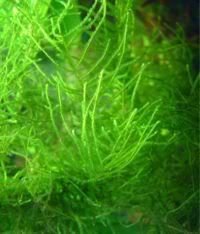
Comments
Java moss is a easy plant for beginners, Java moss is of Asian origin. It is a slow growing but a very hardy plant that tolerates a wide variety of water conditions. Light requirements range from very low - very high, pH tolerance 5-9. Temperature range is 59F - 82F. Java moss is a self attaching moss that is best grown when it is encouraged to attach itself to aquarium objects like stones or driftwood. Spread the moss out onto the driftwood a thin layer and tie it to the driftwood or stones with thin fishing line or cotton thread. Within a month, the line can be removed as the plant takes hold and begins to self propagate along the wood or stone.
|
Microsorium pteropus
(Java fern)
Scientific Name | Microsorium pteropus | | Common Name | Java Fern | | Category | Root | | Hight | 25-45cm | | Width | 10-30cm | | Temp | 20-28 | | pH | 6-8 | | Lighting | V.low-medium | | Growth | Slow | | difficulty | V. Easy | | Origin | S.E. Asia | | Position in Tank | Middle/rear | |
Comments
The java fern is a slow growing plant. but is easy to care for. Propagation by adventitious shoots and rhizome splitting. The Java Fern does not need substrate to root in, It can be attached to wood or rocks. The Java Fern is poisonous and also because of its relatively bitter taste so most herbivores will not eat it. It can survive in temperatures between 22-30ºC and has a pH tolerance of 5.5-7.5. Very high levels of light can make the leaves become transparent. Can tolerate Soft, hard and even slightly brackish water conditions. There are several varieties, these include Windeløv, Red, Philippine, Tropica, Narrow and Undulata.
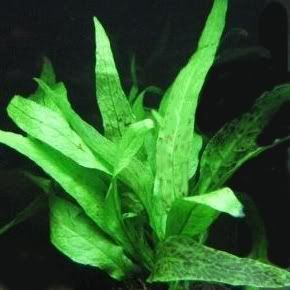
|
Vallisneria tortifolia
(Twisted Vallis)
| Scientific Name | Vallisneria tortifolia | | Common Name | Twisted Vallis | | Category | Root | | Hight | 25-45cm | | Width | 10-15 | | Temp | 20-30c | | pH | 6-8 | | Lighting | low-medium | | Growth | V.Slow | | difficulty | V. Easy | | Origin | Tropical/sub tropical | | Position in Tank | Middle/Rear | |
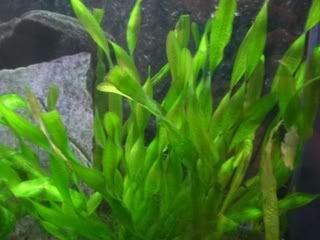
Comments
Vallisneria tortifolia is a dwarf species with tightly coiled leaves. It is a bit more delicate compared with other vallisneria species and also needs good lighting, Vallisneria tortifolia is good choice for small tropical aquarium. Because of its small size and bushy appearance it looks better as mid-ground plant rather than a background one. These plants propagate by sending out runners bearing daughter plants. The runners can be cut, and the daughter plants can be moved with care, if required. Because it doesn't need any special subtrate, co2 injection and isn't picky about water chemistry, makes it quite an easy plant to look after.
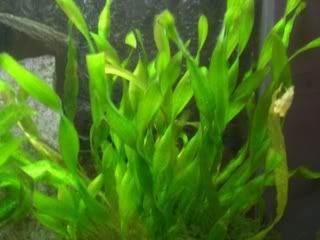
|











